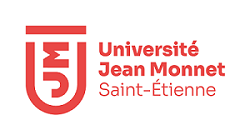Modeling of electron dynamics in laser-irradiated solids: progress achieved through a continuum approach and future prospects
Résumé
A continuum model based on a drift-diffusion approach is applied to describe the dynamics of electronic excitation, heating and charge-carrier transport in metals and dielectrics under near-infrared femtosecond laser irradiation. The dependence of laser-induced charging of the targets on laser fluence and pulse duration is investigated. Various aspects concerning the mechanism of Coulomb Explosion (CE) are discussed. The CE threshold as a function of pulse duration is evaluated numerically for dielectric materials (sapphire and ULE glass). A special attention is paid to studies of interconnection between the electron emission yield and surface charging dynamics. It has been found that in dielectrics the photoemission yield saturates with increasing laser fluence as a result of self-regulation of the free-electron population. By contrast in metals, due to effective supply of electrons to the charging zone on the target surface, electron emission becomes unwarrantably high for short laser pulses and high fluences. However, photo- and thermionic emissions can be suppressed by the generated electric field whose amplitude is a function of pulse duration and laser fluence. The question on self-consistency of electron emission and surface charging is analyzed with outlining further studies.

